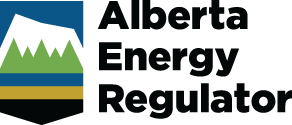Updated June 2023
Energy prices play a key role when deciding on energy development or assessing remaining reserves. Prices are determined by supply and demand, which are both influenced by economic activity, seasonal temperatures, and market access.
Crude Oil Prices
West Texas Intermediate (WTI)
North American crude oil prices are based on the front-month contract price of WTI crude oil at Cushing, Oklahoma, which is the underlying physical commodity market for the New York Mercantile Exchange (NYMEX) for light crude oil contracts.
The near-term forecast for WTI prices is based on the current and expected U.S. and global supply and demand balance within the next three years. Thereafter, prices reflect inflation rates and other factors, such as longer-term global and North American supply and demand trends.
WTI is considered a light, sweet crude oil and has an American Petroleum Institute (API) gravity of 40 degrees and sulphur content of less than 0.5 per cent.
Canadian Light Sweet (CLS)
The CLS crude oil price forecast at Edmonton, Alberta, is derived from WTI prices at Cushing. The price of CLS typically follows similar trajectories as WTI and is adjusted by several factors, including transportation costs from Edmonton to Cushing and the U.S./Canadian dollar exchange rate. The combination of these forecasts and factors are used to develop the light sweet crude oil price forecast in Canadian dollars.
Western Canadian Select (WCS)
The WCS crude oil price forecast is derived from WTI prices at Cushing. The WCS benchmark represents a blend of different bitumen types. The price is based on several factors, including oil sands supply and inventories, demand from U.S. refineries capable of handling heavy oil, transportation costs and availability from Hardisty, Alberta, to Cushing, Oklahoma, the U.S./Canadian dollar exchange rate, and quality differentials (e.g., sulphur content, density).
WCS is considered a heavy, sour crude oil and has an API gravity of 20.5 to 21.5 degrees and a sulphur content of 3.0 to 3.5 per cent. The physical quality distinction between WCS and WTI is relevant as heavy and sour crude oils trade at a discount from light and sweet crude oils.
Natural Gas Prices
Henry Hub
Henry Hub, located in Erath, Louisiana, has traditionally been the primary trading hub for natural gas in North America and is the underlying commodity market for futures prices on the NYMEX.
The Henry Hub price forecast for the near term is derived from current data on existing and expected economic activity in the natural gas sector, North American supply and demand, and the export capacity of North American liquefied natural gas terminals. This data is collected from various Canadian and U.S. government agencies, market and industry reports, and company information.
The long-term forecast considers additional economic factors, including inflation, uncertainties surrounding North American supply and demand, government policies, and project completion schedules.
AECO-C
The AECO-C price from the Natural Gas Exchange (NGX) is the Alberta reference price. AECO-C forecast is derived from the U.S. Henry Hub price forecast, accounting for transportation differentials, regional demand, and the U.S./Canadian dollar exchange rate.
Price Cases
Base price: The most likely price path given what is currently known and expected.
Low- and high-price cases: The low- and high-price cases reflect underlying uncertainties inherent in the base-price case. This is reflected in the short term by implied volatility, estimated using historical prices. Long-term volatility is assumed to grow over time due to rising uncertainty.
Volatility measures how much prices move over time expressed as a percentage difference of the annual commodity price. Because the price is a function of supply and demand, volatility results from the underlying market supply and demand characteristics.
Both the low- and high-price cases represent the 90th percentile confidence intervals, subject to historical volatility. These intervals grow over time to account for increasing uncertainty.
U.S./Canadian Exchange Rate Forecast
Because physical commodities are traded internationally, prices are influenced by the exchange rate between the currencies of the trading partners. As the U.S. dollar is the underlying currency for commodity markets, the focus is on the U.S./Canadian dollar exchange rate.
The exchange rate forecast is an input into the crude oil and natural gas forecast models for projecting Canadian commodity prices. The exchange rate assumptions are based on an evaluation of Canadian economic indicators, such as gross domestic product, inflation rates, residential and commercial investment, and an evaluation of current trade and oil price forecasts.
Capital Expenditures
The capital expenditure forecasts for oil sands and conventional oil and gas are based on the production forecasts for natural gas, crude oil, and crude bitumen set out in this report. The AER estimates them separately and then combines them for the total oil and gas capital expenditures.
Historical statistics are from the Canadian Association of Petroleum Producers (CAPP) Statistical Handbook, with the 2022 value being an estimate until companies report actual capital expenditures.
Oil and Natural Gas
The oil and natural gas capital expenditure forecast represents capital spending on oil and gas drilling and completion, land acquisition, gas plant development, field equipment, geoscience, and enhanced oil recovery. The oil and natural gas capital expenditure forecast is calculated by multiplying the average capital spending per well by the number of new wells placed on production. The number of new wells placed on production is based on crude oil and natural gas production forecasts. The average capital spending per well is calculated using historical capital expenditures and new well counts.
Oil Sands
The oil sands capital expenditure forecast comprises the forecast for new and expansion projects and the forecast for sustaining capital expenditures for existing projects.
New and Expansion Projects
Capital spending requirements for new and expansion projects are broken down into in situ thermal, primary, mining, and upgrading project types. Capital cost assumptions for each project type, including both the capital outlay allocation over time and the construction timelines, are based on publicly available information.
The capital expenditure forecast for new and expansion projects includes projects applied for, approved, or under construction and may incorporate some announced projects. These projects have been assessed for the likelihood of meeting the on stream date and anticipated expenditures.
Sustaining Capital
Sustaining capital expenditures are capital spent by a business to maintain and repair fixed assets and exclude expenses for operations. The AER calculates these expenditures by taking the industry average estimate of sustaining costs per barrel and applying it to the crude bitumen production forecast.
Emerging Resources
The capital expenditure forecast for emerging resources is based on public announcements for hydrogen, helium, geothermal, and lithium projects, including projected capacity additions described in the emerging resources forecast.


